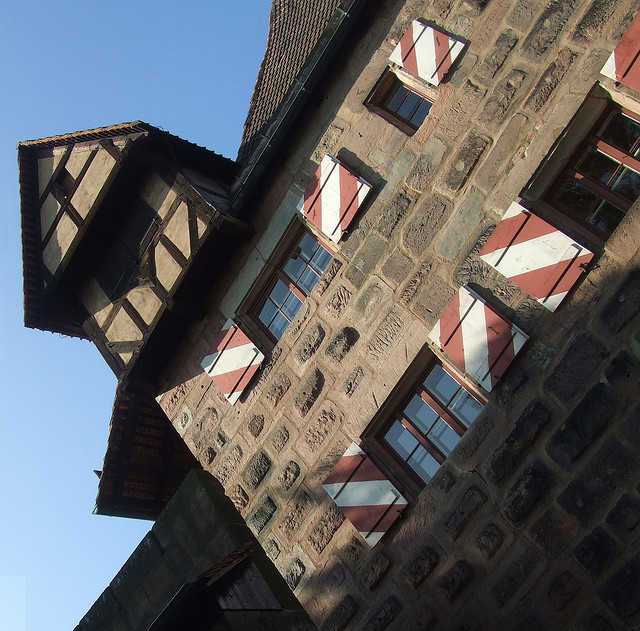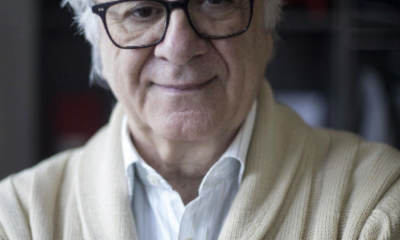Culture and Lifestyle
When Germany is Christian, Is India Hindu?
Disclaimer: The views and opinion expressed here are solely those of the author in her private capacity and do not in any way represent the views of The World Reporter.
Though I live in India since long, there are still some points that I find hard to understand – for example why many so called educated Indians on TV discussion forums become agitated whenever ‘Hindutva’ is mentioned. The majority of Indians are Hindus. India is special because of its ancient Hindu tradition. Westerners are drawn to India because of it. Why then is there this resistance by many Indians to acknowledge the Hindu roots of their country? Why do some people even give the impression as if an India that values those Hindu roots was dangerous? Don’t they know better?
Their attitude is strange for two reasons. First, those people have a problem only with ‘Hindu’ India, but not with ‘Muslim’ or ‘Christian’ countries. Germany for example, is a secular country and only 59 percent of the population are registered with the two big Christian Churches (Protestant and Catholic). Nevertheless, the country is bracketed under ‘Christian countries’. Angela Merkel, the Chancellor, stressed recently the Christian roots of Germany and urged the population ‘to go back to Christian values’. In 2012, she postponed her trip to the G-8 summit for a day to address the German Catholic Day. In September 2011, the Pope was invited to address the German Parliament. Two major political parties carry ‘Christian’ in their name, including Angela Merkel’s ruling party. Government agencies even collect the Church tax (8 percent of the income tax) and pass it on to the Churches.
Germans are not agitated that Germany is called a Christian country, though I actually would understand if they were. After all, the history of the Church is appalling. The so called success story of Christianity depended greatly on tyranny. “Convert or die”, were the options given not only to the indigenous population in America some five hundred years ago. In Germany, too, 1200 years ago, the emperor Karl the Great ordered the death sentence for refusal of baptism in his newly conquered realms. It provoked his advisor Alkuin to comment: ‘One can force them to baptism, but how to force them to believe?’’ Heresy was put down with an iron hand. I still remember a visit to the Nuremberg castle prison as a school kid. There, we were shown the torture chamber and the torture instruments that were used during inquisition. Unbelievable cruelty!
 |
| Nuremberg Castle, image by bill barber |
Those times, when one’s life was in danger if one dissented with the dogmas of the Church, are thankfully over. And nowadays many in the west do dissent and leave the Church in a steady stream – in Germany alone over 2 million officially signed out in the last ten years and during a survey in 2011, 5,5 million Germans ‘considered’ leaving the Church – partly because they are disgusted with the less than holy behavior of Church officials and partly because they can’t believe in the dogmas, for example that ‘Jesus is the only way’ and that God sends all those who don’t accept this to hell.
And here comes the second reason why the resistance to associate India with Hindutva by Indians is difficult to understand. Hinduism is in a different category from the Abrahamic religions. Its history, compared to Christianity and Islam was undoubtedly the least violent as it spread in ancient times by convincing arguments and not by force. It is not a belief system that demands blind belief in dogmas and the suspension of one’s intelligence. On the contrary, Hinduism encourages using one’s intelligence to the hilt. The rishis enquired into truth, discovered universal laws and showed how to live life in an ideal way. Hinduism (please don’t get irritated by this ’modern’ word. In today’s world it is in use for the many streams of Sanatana Dharma) comprises a huge body of ancient literature, not only regarding Dharma and philosophy, but also regarding music, architecture, dance, science, astronomy, economics, politics, etc. If Germany or any other western country had this kind of literary treasure, it would be so proud and highlight its greatness on every occasion.Yet we Germans have to be content with only one ‘ancient’ epic which was written around 800 years ago and probably refers to incidents around 400 AD. That is how far back ‘antiquity’ reaches in Europe, and of course children in Germany hear of this epic, called ‘Nibelungenlied’, in school. Naturally westerners consider the existence of Sri Krishna and Sri Rama as myths. How could they acknowledge a civilization much more ancient and much more refined than their own?
Inexplicably, Indians cater to western arrogance and ignorance by downplaying and even denying their tradition. There is a “Copernicus Marg’ in New Delhi and Indian children do not get to hear in school that the rishis of the Rg Veda knew already that the earth is round and goes around the sun – thousands of years before westerners ‘discovered’ it. (Rg 10’22’14)
When I read some Upanishads, I was stunned at the profundity. Here was expressed in clear terms what I intuitively had felt to be true, but could not have expressed clearly. Brahman is not partial; it is the invisible, indivisible essence in everything. Everyone gets again and again a chance to discover the ultimate truth and is free to choose his way back to it. Helpful hints are given but not imposed.
In my early days in India, I thought that every Indian knew and valued his tradition. Slowly I realized that I was wrong. The British colonial masters had been successful in not only weaning away many of the elite from their ancient tradition but even making them despise it. It helped that the ‘educated’ class could no longer read the original Sanskrit texts and believed what the British told them. This lack of knowledge and the brainwashing by the British education may be the reason why many ‘modern’ Indians are against anything ‘Hindu’. They don’t realize the difference between western religions that have to be believed (or at least professed) blindly, and which discourage if not forbid their adherents to think on their own and the multi-layered Hindu Dharma which gives freedom and encourages using one’s intelligence.
Many of the educated class do not realize that on one hand, westerners, especially those who dream to impose their own religion on this vast country, will applaud them for denigrating Hindu Dharma, because this helps western universalism to spread in India. On the other hand, many westerners, including Church people, very well know the value and surreptitiously appropriate insights from the vast Indian knowledge system, drop the original source and present it either as their own or make it look as if these insights had been known in the west.
Rajiv Malhotra of Infinity Foundation has done painstaking research in this field and has documented many cases of “digestion” of Dharma civilization into western universalism. Hindu civilization is gradually being depleted of its valuable, exclusive assets and what is left is dismissed as inferior.
If only missionaries denigrated Hindu Dharma, it would not be so bad, as they clearly have an agenda which discerning Indians would detect. But sadly, Indians with Hindu names assist them because they wrongly believe that Hinduism is inferior to western religions. They belittle everything Hindu instead of getting thorough knowledge. As a rule, they know little about their tradition except what the British told them, i.e. that the major features are caste system and idol worship. They don’t realize that India would gain, not lose, if it solidly backed its profound and all inclusive Hindu tradition. The Dalai Lama said some time ago that already as a youth in Lhasa, he had been deeply impressed by the richness of Indian thought. “India has great potential to help the world,” he added. When will the westernized Indian elite realize it?
Maria Wirth is a German and came to India for a holiday after finishing her psychology studies at Hamburg University. In recent years, she noticed that there seemed to be a concerted effort to prevent Indians (and the world) from knowing how valuable this ancient Indian heritage is, she started to point out the unique value of Indian tradition. http://mariawirthblog.wordpress.com/
Culture and Lifestyle
Do you want to surprise a special someone?

Precious and semi-precious stones have been highly valued throughout human history, not only because they are expensive, often symbolising status and luxury, but also because of their great symbolism—many even attribute mystical properties to them. Their indescribable beauty, powerful symbolic value, and economic worth make gifting gems a gesture full of meaning when you want to surprise and delight a loved one. Typically, precious stones are exquisitely set in jewellery—be it a ring, earrings, bracelets, or necklaces—becoming family treasures passed down through generations.
How to choose the perfect gem
The first thing to consider is who the gemstone is for and the occasion on which it will be given. One common occasion for gifting a gem is during a wedding proposal, traditionally in an engagement ring.
It’s essential to consider the recipient’s tastes, whether they love to wear standout pieces or prefer something more discreet. The quality of the gem is crucial, especially if this gift is meant to mark an important moment. For this reason, it should be purchased from reputable places with the best advice—two key aspects that define the store whynotgems, based in Madrid, Spain. Here, they don’t just sell gems commercially; they are passionate about them, putting in supreme effort and dedication, making a significant difference in the industry. The experts at WhyNotGems are constantly travelling around the world to acquire the finest stones, which they then offer to their clients with the most competitive quality-price ratio. They have a versatile online store offering a wide variety of gems, jewellery, and settings to choose from, tailored to individual tastes and preferences.
Another essential aspect to consider when picking a gem is the budget. The price range is very broad, depending on the size, quality, and type of gem. Diamonds, commonly used in engagement rings, are generally the most expensive. Some opt for more affordable but equally beautiful options, such as emeralds, sapphires, topazes, and rubies, which also vary in price depending on their quality and the jewellery in which they are set.
Some characteristics that denote the quality of a stone include its lack of imperfections, vivid colour, and clear transparency. This not only enhances its beauty but also ensures its longevity.
Gems and their meanings
When gifting a stone to a loved one, you’re expressing something. They are more than just a beautiful adornment; they carry significant meaning, so it’s important to understand their symbolism to let the gift speak for itself. For example, diamonds are associated with eternal love, which is why they are the traditional stone for engagements. Sapphires, with their characteristic deep blue, symbolise nobility and loyalty and are often exchanged between friends and family. When you give this gem to a loved one, it conveys that you greatly value your relationship, whether it’s a friendship or family bond. It also signifies a desire to protect the other person during difficult times. Those who love passionately tend to choose rubies, with their characteristic deep red. These gems are typically gifted on wedding anniversaries, as they denote the intensity of a feeling that grows over time.
It’s important to remember that the meanings of stones vary according to individual cultures and beliefs. Some people place more weight on the metaphysical properties of gems, while others are simply enchanted by their aesthetic appeal. Either way, giving a stone will always be a great way to please a loved one on a special occasion.
In conclusion, gifting a gemstone is more than just giving a beautiful piece of jewellery; it’s a timeless gesture filled with deep meaning and thoughtfulness. Whether chosen for its symbolism, aesthetic appeal, or as a treasured keepsake, a gem is a perfect way to express love, appreciation, and commitment to someone special.
Culture and Lifestyle
The visionary Spanish artist makes a milestone in the art industry and human science

The art industry is buzzing with the incredible news of a Spanish artist, Eduardo Vidal, who has achieved an unparalleled milestone in both art and human science. His work can be described as visionary, a term that only few artists are able to live up to. While his works have been featured in some of the world’s most prestigious galleries and museums, Eduardo Vidal art remains humble about his talent.
Eduardo Vidal has developed an original style that blurs the lines between surrealism and minimalism. He uses color theory to create pieces that are both complex yet simple at the same time; he also combines techniques from traditional painting with modern digital technology to create intricate designs. His work is praised for its innovative approach which speaks directly to viewers’ emotions and encourages them to think differently about the world around them.
Art Industry Impact
Art has been a form of expression for centuries, and it continues to be an important part of our culture today. In recent years, the art industry has seen tremendous growth and development as more people turn to art as a means of communication. One artist who is making waves in the industry is Spanish visionary artist Miguel Molinez. He recently achieved a milestone that could have long-term implications not just for the art world, but also for human science.
Molinez’s innovative technique combines the traditional principles of painting with modern digital technology, creating unique works that have captivated audiences around the world. His creative approach to creating artwork has yielded ground-breaking results in both aesthetics and scientific accuracy. His most recent project which involved recreating an ancient historical moment using light was so successful that it could open up new possibilities in terms of exploring our past through visual arts.
Human Science Revolution
The Spanish artist, Carlos Bermejo, has just made a monumental breakthrough in the art and science worlds. His unique approach to incorporating elements of human science into his artwork is revolutionizing the way people think about art. With an emphasis on connecting human emotion and experience with scientific models, he is paving the way for a new era of expressionism.
Bermejo’s latest masterpiece incorporates theoretical physics principles to explore the relationship between time and space. This ambitious project has gained global attention as it bridges both art and science by exploring how humans interact with their environment on an individual level. His work provides a platform for viewers to consider their own place within this world by reflecting on its beauty, mystery, and complexity.
The conclusion of the article regarding Spanish artist’s milestone has been monumental. Spanish visionary artist, Eduardo Vidal, has made a lasting mark on the art industry and human science alike. This new milestone is considered groundbreaking, as it has observed the way humans interact with their environment by utilizing scientific principles and innovative techniques to create meaningful works of art.
Eduardo Vidal success in this field proves that there are no boundaries when it comes to creating meaningful works of art. Through his work, Eduardo Vidal was able to bring together different disciplines such as science and art, highlighting how intricately intertwined they truly are. The impact of his contribution is undeniable; not only has he created incredible works of art, but he also helped bridge the gap between creative fields and opened up new possibilities for exploration in the future.
Culture and Lifestyle
Spend All Your Time Online? Hobbies That’ll Get You More Hands On

If you find yourself always online, it’s best to turn off the computer or phone and find something else to do. However, that’s a lot easier said than done! But if you’ve got a hands-on hobby in your back pocket, you’ll always have something fun and practical to turn to when you get bored.
Staring at a screen all day isn’t healthy for you, and it’s good to find real ways to rest your eyes and get outside a bit more. As such, here are some ideas regarding the kinds of hobbies that’ll help you find enjoyment in things other than what’s going on online.
Woodworking
If you’ve ever fancied yourself as a carpenter, this is the first step on your journey to putting huge items of furniture together for your own home. Get a bit of wood, get a carving knife, and see how you can manipulate the material to make something interesting. Take precautions and protect your hands, but have fun at the same time. And while you’ve not got a woodworking shop yet, even just a small set of tools can help you whittle your way to new cutlery, decorative figurines, and incredibly personal birthday and anniversary presents.
Building Models
Miniatures are a very popular hobby, and all thanks to the time and love we have to put into making them. And when you’re a fan of building your own models, you can move into other item builds, such as attaching 80 lower receiver jigs to a rifle project of your own. But to get started, all you need is a set of models to crack open, snip off, and glue together. Once you’re done with this, you can start painting them and even put together your own playing team. It’s not just a one step hobby you can then display in a cabinet – there’s a lot of nuance to explore.
Gardening and Landscaping
Gardening is a totally free hobby to pick up if you’ve already got a garden. You can take cuttings from bushes, trees, and plants that you see out and about and then try to cultivate the same greenery in your own garden. Indeed, it’s a great way to blow off steam as well as get your hands dirty, which is something a screen just won’t allow! But if you prefer cutting back in the garden, you can try out landscaping instead, which will help you to design the outdoor space you’ve always wanted to relax in.
Bake Your Own Bread
Baking is one of the best hands-on hobbies out there. Why? Because you get to eat something when you’re finished. And baking bread is quite the artform, so you’ll need to really brush up on your skills here. Plus, a freshly baked loaf every morning is always something to look forward to – it’s just the cleaning that’s annoying!
If you’re always online, it’s time to break the habit! Get out and remind yourself there are other things to enjoy.
-

 Business11 months ago
Business11 months agoHow To Future-Proof Your Business With The Right Tools
-

 Travel10 months ago
Travel10 months agoTravelling from San Antonio to Guadalajara
-

 Travel7 months ago
Travel7 months agoTravel wellness tips for a healthier and more enjoyable journey
-

 Europe5 months ago
Europe5 months agoRecent Books by Boaventura de Sousa Santos: Law, Colonialism, and the Future of Europe



